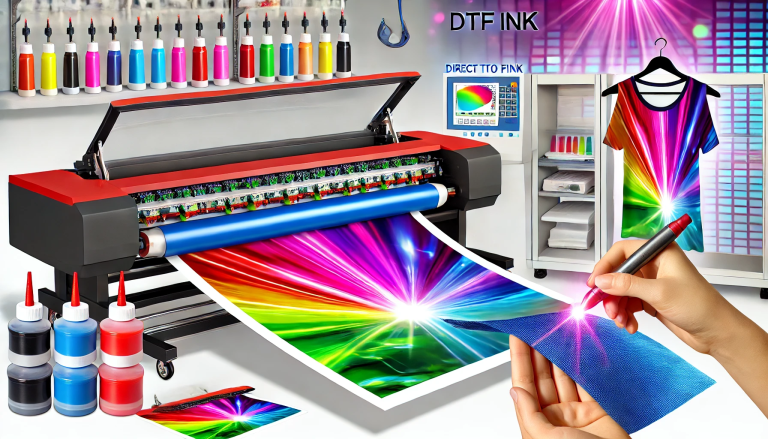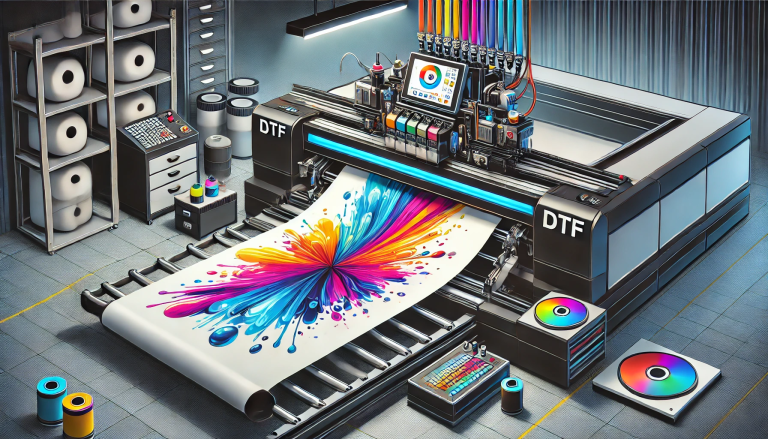There’s something unequivocally classic about a black shirt with a white design. It’s a look that transcends trends and time, effortlessly merging sophistication and simplicity. Thanks to advancements in digital technology, fashion entrepreneurs and printing enthusiasts now have a new tool at their disposal to create high-quality white designs on black fabric: White UV DTF (Direct to Film) powder. In this blog, we delve into the magic of using white UV DTF powder on black shirts, how it’s transforming the garment printing industry, and why you should consider it for your next design project.
The Rise of DTF Printing
Before we dive into the specifics of using white UV DTF powder on black shirts, it’s helpful to have a grasp of DTF printing itself. Standing for Direct to Film, DTF printing is a relatively new, yet rapidly popularizing technology in the digital textile printing world. It allows for high-resolution, full-color prints to be transferred onto virtually any type of fabric, including cotton, polyester, and blends, with no minimum order quantity, and without the need for pretreatment.
The Power of White UV DTF Powder
One of the essential components of the DTF printing process is the DTF powder, which is applied to the printed film and subsequently heat-pressed onto the fabric. This powder melts during heat pressing, acting as a glue that adheres the design firmly to the fabric.
White UV DTF powder has gained attention for its vibrant, opaque, and glossy finish when used on dark-colored garments, especially black shirts. It provides a stark contrast that allows designs to pop, highlighting the intricacies of the print. Unlike traditional screen printing, which often struggles with white ink’s opacity on black shirts, white UV DTF powder ensures high-definition, long-lasting, and fade-resistant prints.
Steps to a Stunning Design
So how do you use white UV DTF powder on a black shirt? It’s a straightforward process that requires a DTF printer, white UV DTF ink, DTF powder, and a heat press.
- Design Creation: First, you create your design using graphic software like Adobe Photoshop or Illustrator.
- Printing: The design is then printed mirror-inverted onto a specialized DTF film using white UV DTF ink.
- Powder Application: After printing, the DTF powder is applied evenly to the printed side of the film.
- Curing: Next, the film goes through a curing or drying process, typically using a heat tunnel or heat press, which melts the powder, turning it into an adhesive.
- Heat Press: The cured film is then placed onto the black shirt, and a heat press is used to transfer the design onto the fabric.
- Peeling: Once the shirt has cooled down, the film is peeled off, leaving a stunning white design.
Transforming the Printing Industry
The use of white UV DTF powder on black shirts is revolutionizing the garment printing industry, offering a bevy of benefits to both businesses and consumers:
- Quality: The vibrant white prints provide a level of contrast and clarity that is difficult to achieve with other printing techniques.
- Durability: The prints are not only fade-resistant, but they also withstand numerous washes without peeling or cracking, increasing the lifespan of the garment.
- Versatility: Whether you’re printing intricate designs, detailed photographs, or simple typography, DTF can handle it all.
- Accessibility: DTF printing eliminates the need for minimum orders, making it a cost-effective choice for small businesses and individual designers.
In conclusion, the innovative use of white UV DTF powder on black shirts is transforming the way we print on textiles, opening up a new world of creative possibilities for designers and print shops. As the technology continues to evolve, we can anticipate even more impressive print quality and functionality, reshaping the garment printing industry and elevating our printed clothing to new heights.




